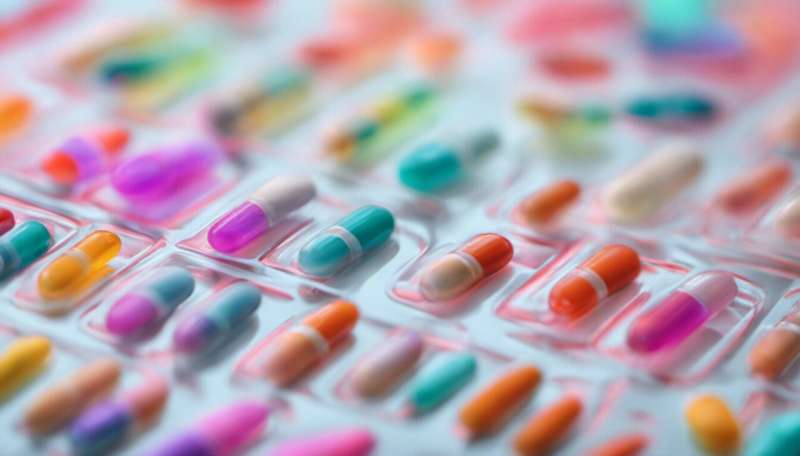Easier access to prescription drugs puts teens at risk

When you think about substance use and teens, drugs like marijuana or Ecstasy might come to mind. But recreational prescription drug use is a significant problem. Nationally, 17.8% of high school students have used prescription drugs without a prescription in their lifetime and 7% have done so at least ten times. The most common prescription drugs adolescents misuse are narcotics like Vicodin or stimulants like Adderall and Ritalin.
Prescription drug misuse has been shown to increase the risk for further drug abuse, addiction and death by overdose. In 2013, 1.5 million young people initiated non-medical use of pain relievers, which was second only to marijuana. Also, between 2004 and 2013, the number of people, both adolescents and adults, dependent on pain relievers rose from 1.4 to 1.9 million. To the put that in perspective, in the US, overdoses outnumber traffic-related deaths.
As a researcher in the field of substance use and addiction, I wanted to know more about the risk factors for prescription drug misuse in teens. Colleagues and I reviewed the research on non-medical use of prescription drugs among teens and compiled a list of the strongest risk factors for misuse.
Risk factors
We found that previous use of other illegal substances can be a risk factor because it could be related to a desire to experiment or the perception that drug use in general is not a big deal. Young people who do not think that using prescription drugs is harmful are more likely to use them for non-medical reasons than those who view them as harmful. Many young people think that prescription drugs are safer than other drugs because they are legal and prescribed by a doctor.
Greater access to prescription drugs also increases the chances of use. Doctors are prescribing an increasing number of prescription drugs in the US. Over the past two decades, there has been a three-fold increase in opioid prescriptions and a major increase in stimulant prescriptions given out by pharmacies nationally. This means teens are more likely to know someone with a prescription for these drugs, or are more likely to have them in their home.
Little pills with big consequences
The 2013 Monitoring the Future report, a yearly survey of adolescent behavior and attitudes, revealed that over half of 12th grade students surveyed reported that it would be "fairly easy" or "very easy" to get prescription narcotic drugs (eg, Vicodin, OxyContin, Percocet), saying that friends and relatives would be the primary source. Narcotic pain relievers and stimulants used to treat Attention Deficit Hyperactivity Disorder (ADHD) are the most commonly misused prescription drugs among young people. The use of Adderall and Ritalin has almost doubled in use since 2008. These drugs can provide a high or are perceived to increase attention and focus.
In general, high school students who report recreational prescription drug use tend to have worse grades and are more likely to drop out of school than their non-using peers. This is also the case for college students. Taking these drugs without a prescription or medical need may be due, in part, to students wanting to perform better in a competitive academic environment.
Teen drug use is on a downward trend
Fortunately, the US is making strides in reducing substance misuse, especially among teenagers. Over the past decade, there has been a decline in alcohol, cigarette and illicit drug use among high school students, and the misuse of prescription drugs was down from 20.7% in 2011 to 17.8% in 2013.
Because many different factors can influence whether adolescents misuse prescription drugs, prevention and intervention programs need to address this problem from various angles. Reducing access to prescription drugs among adolescents and working with parents, pediatricians, teachers and coaches are good places to start. We should also encourage parents to discuss the harms of recreational drug use with their kids to help change adolescents' social norms and perceptions that prescription drugs are safer than other illegal drugs.
Those who play an important role in young people's lives can be influential when it comes to substance use. For example, having friends who use substances or approve of substance use can increase the chances that adolescents will misuse prescription drugs. In fact, this is one of strongest and most consistent risk factors for prescription drug misuse.
In our research we found a number of factors that seems to protect teens from prescription drug misuse. Parents who disapprove of substance use and play an active role in their children's lives can reduce the risk of their children using prescription drugs (and other substances) recreationally. We also found that young people who go to religious services frequently are less likely to use prescription drugs non-medically.
This story is published courtesy of The Conversation (under Creative Commons-Attribution/No derivatives).
![]()

















